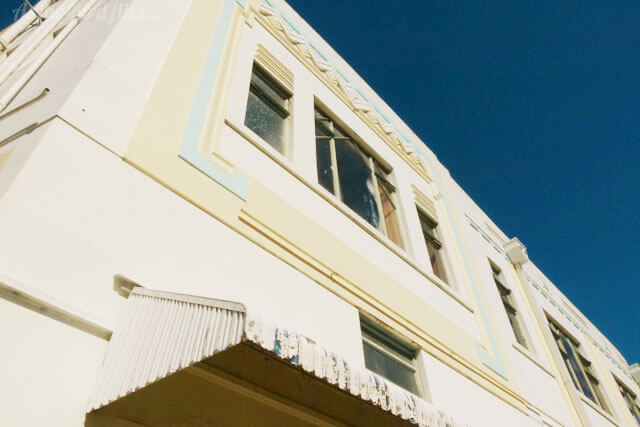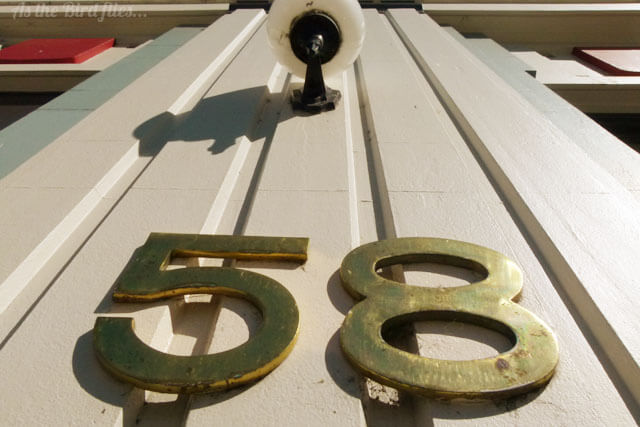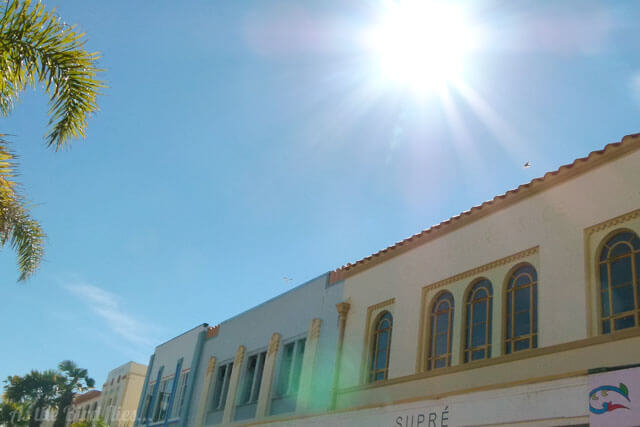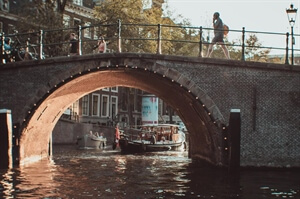Art Deco Halos: Napier, New Zealand
 Is it wrong when surrounded by so much natural beauty in the dramatically ever-changing landscape of New Zealand that one of the highlights of my trip there was a relatively unknown small coastal town?
Is it wrong when surrounded by so much natural beauty in the dramatically ever-changing landscape of New Zealand that one of the highlights of my trip there was a relatively unknown small coastal town?
But Napier stole my heart for very different reasons. It is a town with accidental style and has a story tinged with tragedy but saturated in courage.
Napier's first European visitor was some sea-faring dude called Captain James Cook who in 1769 sailed the east coast of what would be named New Zealand's North Island and quickly identified the site where Napier now stands as having great potential as a seaport. It would appear that he knew a thing or two this Captain Cook as by early 1900s Napier and the surrounding Hawke's Bay area was a fast growing metropolis, well, by New Zealand's standards at least.
However, on 3rd February 1931 an earthquake shook the Hawke's Bay area and flattened most of Napier. 256 people died and many of the buildings which weren't levelled to the ground were destroyed in ensuing fires which lasted for many days after the quake. Rescue efforts were severely hindered by the 525 aftershocks recorded in the two weeks which followed the original 7.9 magnitude quake.
What happened next is a testament to the people of Napier and Hawke's Bay. Despite tough economic times and the obvious devastating personal loss to a region of less than 30,000 people at the time, rebuilding wasn't delayed or deliberated upon. Instead affirmative action was taken, including a full review of the building codes to which New Zealand property construction was to adhere to. But more visibly, there is a lasting legacy of Napier and surrounding settlements is that the city was rebuilt in the Art Deco style that was at its peak of popularity. As a result of the devastating quake, which remains New Zealand's worst natural disaster, the city of Napier is a world centre of Art Deco, second only to Miami though many consider it to be on a par with the Florida city.


 In most other cities I've visited around the world art deco architecture pops up as a stand alone feature, glamorous and smooth as ever, but ultimately in a solitary way. This is, of course, due to many different factors affecting urban landscapes including the global economic constraints at the time and in Europe certainly, the damaging effects of the war subsequently. It is fair to say that I noticed more Art Deco buildings in Australia than in Europe, because of the building boom that was occurring there at the time, which then wasn't eradicated in the war. But I've never seen anything like Napier. In Napier it is the other way around. The buildings from the 1960s or 1970s stick out like sore thumbs and indeed there aren't many of them thanks to the intervention of local and international support of Art Deco. In 2007 the city was nominated as a UNESCO Heritage Site, New Zealand's first. The time I spent with my camera in Napier were some of the hours I treasure most during my trip in New Zealand. (Thank you Betty for indulging me!)
In most other cities I've visited around the world art deco architecture pops up as a stand alone feature, glamorous and smooth as ever, but ultimately in a solitary way. This is, of course, due to many different factors affecting urban landscapes including the global economic constraints at the time and in Europe certainly, the damaging effects of the war subsequently. It is fair to say that I noticed more Art Deco buildings in Australia than in Europe, because of the building boom that was occurring there at the time, which then wasn't eradicated in the war. But I've never seen anything like Napier. In Napier it is the other way around. The buildings from the 1960s or 1970s stick out like sore thumbs and indeed there aren't many of them thanks to the intervention of local and international support of Art Deco. In 2007 the city was nominated as a UNESCO Heritage Site, New Zealand's first. The time I spent with my camera in Napier were some of the hours I treasure most during my trip in New Zealand. (Thank you Betty for indulging me!) 




 I hold a special interest in the architecture because I used to live in an Art Deco building , albeit a functional ex-local housing block of flats, but the curves and the softness of Art Deco were there. I have always adored this distinctive style that seems both so classical and yet futuristic. I loved the nostalgia I felt wandering around Napier. London is, of course, packed with streets of old houses. My first home in Shepherd's Bush was a Victorian terrace and NewMan's flat was the ground floor in a grand Regency house and being the British Bird I am, I love old, but Art Deco has always felt so much more tangible and creative. I admire the aspiration that is to be found in Art Deco. It was breaking rules while also leaning on so many past influences like Greek-Roman classicism and Spanish Mission styles (many of which can be seen in Napier). And when you think about the time in which Art Deco was born - in the 1920s and 30s, sandwiched between two world wars - it becomes impossible to not be impressed by its focus on aesthetically pleasing and expressive design for even the most mundane items when so much turmoil and unpredictability hung in the air.
I hold a special interest in the architecture because I used to live in an Art Deco building , albeit a functional ex-local housing block of flats, but the curves and the softness of Art Deco were there. I have always adored this distinctive style that seems both so classical and yet futuristic. I loved the nostalgia I felt wandering around Napier. London is, of course, packed with streets of old houses. My first home in Shepherd's Bush was a Victorian terrace and NewMan's flat was the ground floor in a grand Regency house and being the British Bird I am, I love old, but Art Deco has always felt so much more tangible and creative. I admire the aspiration that is to be found in Art Deco. It was breaking rules while also leaning on so many past influences like Greek-Roman classicism and Spanish Mission styles (many of which can be seen in Napier). And when you think about the time in which Art Deco was born - in the 1920s and 30s, sandwiched between two world wars - it becomes impossible to not be impressed by its focus on aesthetically pleasing and expressive design for even the most mundane items when so much turmoil and unpredictability hung in the air. 




 Napier and all its Art Deco halos echo this sense of hope and achievement in the face of adversity. Look closely and you'll see how many buildings mixed traditional Maori design with Art Deco to create truly unique features. There are many walks you can do to explore Napier and a good first point of call would be the Art Deco Trust based in Napier, which now welcomes thousands of tourists every week and is the home of an annual Art Deco summit. But much more than this, it is a beautiful place to live; a place that the locals can be proud of, where travellers can and should take a little time to enjoy the beauty in both the buildings and the story of Napier.
Napier and all its Art Deco halos echo this sense of hope and achievement in the face of adversity. Look closely and you'll see how many buildings mixed traditional Maori design with Art Deco to create truly unique features. There are many walks you can do to explore Napier and a good first point of call would be the Art Deco Trust based in Napier, which now welcomes thousands of tourists every week and is the home of an annual Art Deco summit. But much more than this, it is a beautiful place to live; a place that the locals can be proud of, where travellers can and should take a little time to enjoy the beauty in both the buildings and the story of Napier. P.S. Who knew that PM Dawn did a song called "Art Deco Halos"? It's also . I guess we were all too busy bopping along to Set Adrift on Memory Bliss.
P.S. Who knew that PM Dawn did a song called "Art Deco Halos"? It's also . I guess we were all too busy bopping along to Set Adrift on Memory Bliss.

Frances M. Thompson
Find Frankie on Facebook, Twitter, Instagram, Pinterest, and Google+.
 Family Travel: How to Travel with Kids - My Golden Rules
Family Travel: How to Travel with Kids - My Golden Rules_x300.jpg?v=1) Amsterdam Travel: Best Luxury Hotels in Amsterdam - Reviewed!
Amsterdam Travel: Best Luxury Hotels in Amsterdam - Reviewed! Solo Luxury Travel: Best Caribbean Islands for Solo Travellers
Solo Luxury Travel: Best Caribbean Islands for Solo Travellers New Zealand Travel: 51 Interesting Facts About New Zealand Aotearoa
New Zealand Travel: 51 Interesting Facts About New Zealand Aotearoa Amsterdam Travel: Accessible Travel Guide for Amsterdam
Amsterdam Travel: Accessible Travel Guide for Amsterdam About the Blog & Frankie
About the Blog & Frankie Welcome to My Amsterdam Travel Blog!
Welcome to My Amsterdam Travel Blog! Welcome to My Luxury Family Travel Blog!
Welcome to My Luxury Family Travel Blog! Welcome to My Writing Blog!
Welcome to My Writing Blog! Lover Mother Other: Poems - Out Now!
Lover Mother Other: Poems - Out Now! I Write Stories That Move You
I Write Stories That Move You Order WriteNOW Cards - Affirmation Cards for Writers
Order WriteNOW Cards - Affirmation Cards for Writers Work With Me
Work With Me